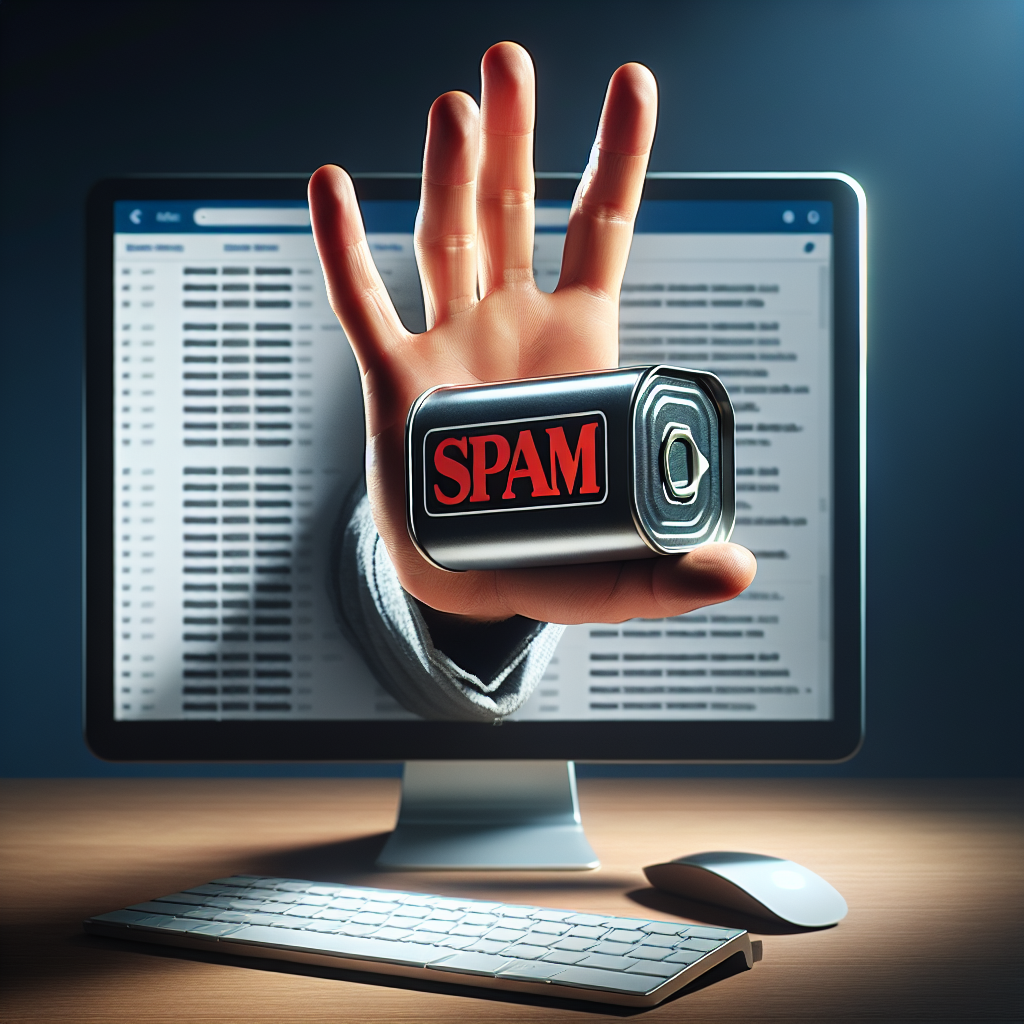Are you tired of your emails getting flagged as spam? Do you want to effectively reach your customers without annoying them? Look no further! In this article, we will explore the secrets of successful email marketing without spamming. Learn how to create engaging content, build a targeted audience, and craft personalized messages that will keep your subscribers interested and coming back for more. Say goodbye to the spam folder and hello to a thriving email marketing strategy.

Choosing the Right Email Marketing Platform
When it comes to email marketing, choosing the right platform is crucial for the success of your campaigns. There are numerous email marketing platforms available, so it’s important to research and compare the different options to find one that meets your specific needs. Consider factors such as ease of use, features offered, pricing plans, and customer support.
First and foremost, it’s important to consider your budget. Determine how much you’re willing to invest in an email marketing platform and find one that aligns with your financial resources. Many platforms offer different pricing plans to accommodate businesses of all sizes, so you’re likely to find one that suits your budget.
Another important factor to consider is your specific needs. What are you looking to achieve with your email marketing efforts? Are you a small business looking to increase brand awareness, or are you an e-commerce store aiming to drive more sales? Understanding your goals and requirements will help you narrow down your options and find a platform that caters to your unique needs.
Additionally, it’s crucial to choose a platform that offers anti-spam features. Spam emails not only annoy recipients but also harm your brand’s reputation. Look for platforms that have strong anti-spam measures in place and prioritize deliverability to ensure your emails land in the recipients’ inboxes rather than their spam folders.
Building a Legitimate Email List
Building a legitimate email list is key to successful email marketing. It’s important to obtain permission from recipients before sending them emails. This can be done through various methods such as opt-in forms on your website, contests or giveaways, or asking customers during the checkout process. By obtaining permission, you ensure that your emails are reaching people who are genuinely interested in hearing from you.
One effective technique to confirm email addresses and validate the recipient’s intent is through double opt-in. With double opt-in, after a person signs up for your email list, they receive a confirmation email asking them to verify their subscription. This process helps keep your list clean and ensures that recipients have explicitly given their consent to receive emails from you.
While it may be tempting to purchase email lists, it’s a practice that should be avoided. Purchased lists often contain outdated, irrelevant, or even fake email addresses, which can lead to high bounce rates and damage your sender reputation. It’s always best to build your email list organically, even if it takes longer, as it will result in a higher quality and more engaged subscriber base.
Crafting Relevant and Engaging Content
To make your email campaigns successful, it’s crucial to understand your target audience and their interests. Take the time to research and analyze your audience demographics, behaviors, and preferences. This knowledge will help you create content that is relevant and interesting to your subscribers.
Personalization is another important aspect of creating engaging email content. Address your subscribers by their names and tailor your content to their preferences whenever possible. This adds a personal touch and makes your subscribers feel valued and recognized as individuals.
One of the first things that recipients see when they receive an email is the subject line. Therefore, it’s essential to use engaging subject lines that capture their attention and entice them to open the email. Experiment with different styles, such as posing a question, offering a benefit, or creating a sense of urgency, to see what resonates best with your audience.
Implementing Proper Email Design and Formatting
When it comes to email design and formatting, simplicity is key. Keep the design clean and uncluttered, with a focus on easy readability. Use a professional template that is visually appealing but not distracting. Remember, the goal is to provide a seamless and enjoyable reading experience for your subscribers.
In today’s mobile-centric world, it’s crucial to ensure that your emails are mobile-friendly. A significant portion of email opens occur on mobile devices, so your emails should be optimized for different screen sizes and resolutions. Test your emails across various devices and email clients to ensure they display correctly and are easily navigable on mobile devices.
Including a clear call-to-action (CTA) in your emails is vital for driving engagement and achieving your desired outcome. Whether you want recipients to make a purchase, sign up for an event, or download a resource, make sure the CTA stands out and is clearly defined. Use buttons or hyperlinked text to make it easy for recipients to take the desired action.

Writing Compelling and Non-Spammy Email Copy
To ensure that your emails are not perceived as spam, it’s important to avoid using deceptive or misleading language. Be transparent and honest in your email copy, clearly stating the purpose and value to the recipient. Misleading subject lines or exaggerated claims only lead to disappointment and can damage your credibility.
Provide valuable information or offers in your emails to give recipients a reason to open, read, and engage with your content. Whether it’s educational content, exclusive discounts, or helpful tips, make sure your emails deliver something of value to your subscribers. By consistently providing valuable content, you build trust and establish yourself as an authority in your industry.
When it comes to email writing, proper grammar is essential. Avoid sloppy grammar or spelling mistakes that can undermine your professionalism. Additionally, excessive use of capital letters or symbols can come across as aggressive or spammy. Use punctuation and capitalization appropriately to ensure that your emails have a polished and professional appearance.
Managing Frequency and Opt-Out Options
Determining the appropriate email frequency is crucial for maintaining a positive relationship with your subscribers. Too many emails can overwhelm and annoy recipients, leading them to unsubscribe or mark your emails as spam. On the other hand, too few emails can make your subscribers forget about your brand or lose interest. Find a balance that works for your audience by monitoring engagement metrics and gathering feedback.
Respect your subscribers’ freedom to choose by making it easy for them to unsubscribe. Include an unsubscribe link in every email and ensure that the process is straightforward and hassle-free. By respecting unsubscribe requests promptly, you foster an environment of trust and demonstrate your commitment to providing a positive user experience.
Testing and Analyzing Email Campaigns
Testing and analyzing your email campaigns are crucial steps in optimizing your email marketing efforts. Split testing, also known as A/B testing, allows you to compare different elements of your emails, such as subject lines, content, or CTAs, to determine what resonates best with your audience. By testing and refining your campaigns, you can make data-driven decisions that lead to improved performance.
Analyze open rates, click-through rates, and conversion rates to gain insights into the effectiveness of your emails. Open rates indicate how many recipients have opened your emails, while click-through rates measure how many recipients clicked on links within your emails. Conversion rates, on the other hand, show how many recipients completed a desired action, such as making a purchase or signing up for a webinar. By monitoring these metrics, you can identify trends, strengths, and areas for improvement in your campaigns.
Based on your analysis, make adjustments and improvements to future campaigns. Test different variables, track the results, and apply what you learn to iterate and refine your email marketing strategy. Continuous optimization based on data and insights is key to achieving better results with each email campaign.
Maintaining a Strong Sender Reputation
Maintaining a strong sender reputation is vital to the success of your email marketing efforts. An authenticated domain and a consistent sender name help establish trust and credibility with your recipients. Authenticate your domain by implementing SPF (Sender Policy Framework), DKIM (DomainKeys Identified Mail), and DMARC (Domain-based Message Authentication, Reporting, and Conformance) protocols. This helps ISPs (Internet Service Providers) verify that your emails are legitimate and not forged or spoofed.
Monitor email bounces and spam complaints to identify any deliverability issues promptly. High bounce rates or spam complaints can negatively impact your sender reputation and, in severe cases, result in your emails being blocked or redirected to spam folders. Regularly review and clean your email list to remove invalid or inactive email addresses and reduce the likelihood of bounces.
If you encounter any deliverability issues, address them promptly. Investigate the root cause and take corrective actions to resolve the problem. Maintaining a clean, engaged, and responsive email list, along with implementing best practices in email marketing, will help ensure good deliverability rates and maintain a strong sender reputation.
Complying with Email Marketing Regulations
Compliance with email marketing regulations is essential to avoid legal trouble and maintain a positive reputation. Familiarize yourself with the CAN-SPAM Act regulations if you are targeting recipients in the United States. These regulations require, among other things, that your emails include a clear and conspicuous unsubscribe option, a legitimate physical mailing address, and accurate header information.
If you are targeting European recipients, you must also ensure compliance with the General Data Protection Regulation (GDPR). The GDPR establishes guidelines for the lawful processing of personal data and provides individuals with greater control over their personal information. Obtain explicit consent from European subscribers and provide them with options to manage their data and unsubscribe easily.
Including a physical mailing address in your emails is not only a legal requirement but also adds credibility and transparency to your brand. It shows recipients that you are a legitimate business and provides them with a means to contact you if needed.
Providing Value and Building Relationships
To build a successful email marketing strategy, it’s essential to focus on providing value to your subscribers. Your emails should deliver content that is informative, helpful, or entertaining. By consistently providing valuable content, you establish yourself as a trusted resource in your field and cultivate loyal relationships with your subscribers.
To build trust and credibility, engage with your subscribers through two-way communication. Encourage them to reply to your emails, ask questions, or provide feedback. Take the time to respond to their inquiries or comments and show genuine interest in their needs and opinions. This interactive approach helps foster a sense of community and strengthens the relationship between your brand and its subscribers.
In conclusion, successful email marketing involves a combination of strategic planning, thoughtful execution, and continuous improvement. By choosing the right email marketing platform, building a legitimate email list, crafting relevant and engaging content, implementing proper design and formatting, writing compelling copy, managing frequency and opt-out options, testing and analyzing campaigns, maintaining a strong sender reputation, complying with regulations, and providing value to your subscribers, you can create effective and non-spammy email marketing campaigns that yield positive results for your business.
